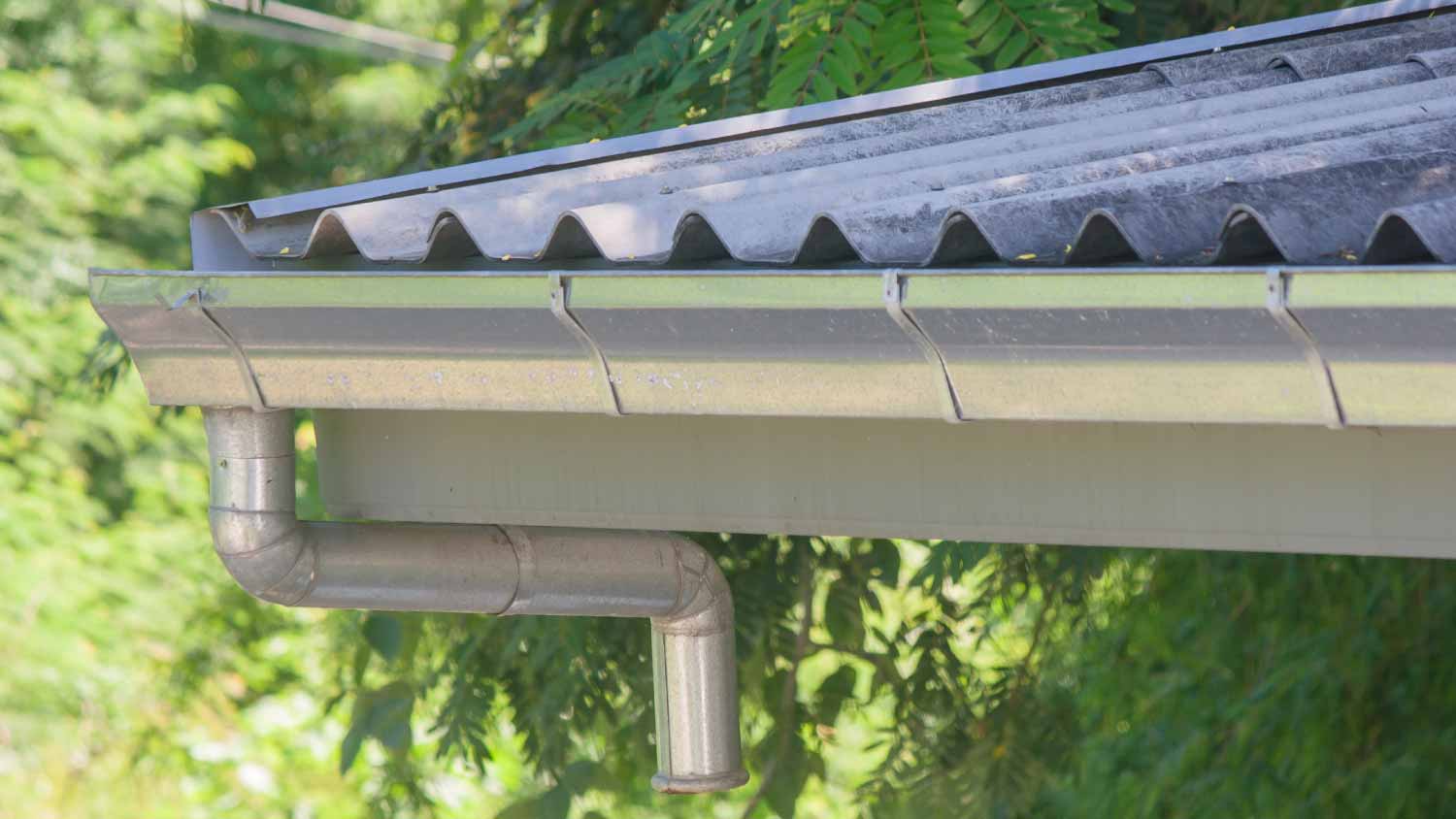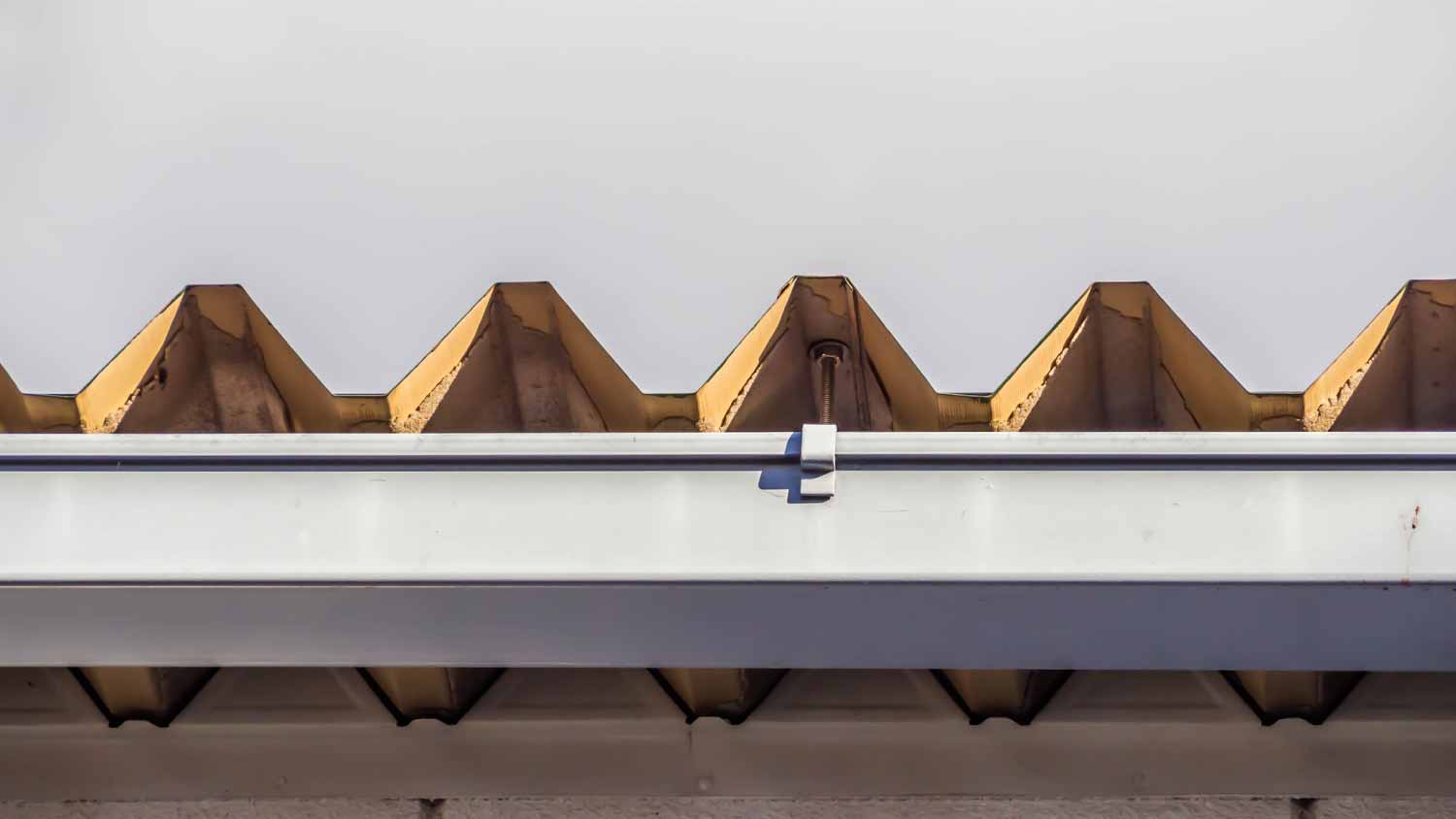
Wondering how much gutter installation costs? We’ll break down prices by material, gutter type, and other factors impacting overall gutter costs.
Choose from four types of gutters for metal roofs


Metal roofs offer a streamlined look for your home, are highly durable against extreme weather, are notably energy-efficient, and can last for decades—some even more than half a century. If you’ve weighed the pros and cons of metal roofs and decided to install one over your home, you’ve still got another decision to make: What are the best types of gutters for metal roofs, and which is right for your home?
That’s right: Just as there are various types of metal roofs, so too are there multiple types of gutters for metal roofs. Below, we’ll explore all three, including the pros and cons of each option.

K-style gutters are among the most popular types of gutter systems. Shaped like a K when viewed from the side, K-style gutters (also called ogee gutters) have a high water capacity due to their unique shape.
This makes K-style gutters ideal for homes located in areas with heavy rainfall. K-style gutters are also aesthetically pleasing because they require hidden hangers, and they come in a variety of colors. They’re usually sold in aluminum and galvanized steel. And because they sit flush against the roof fascia (underneath the roof’s edge), they’re also perfect for metal roofs.
However, because of their sharp corners, it’s easier for them to get clogged with debris. Gutter guards are worth the investment if you install ogee gutters.
| Pros | Cons |
|---|---|
| Highly efficient for areas with heavy rainfall | Can get more debris caught in them |
| Aesthetically pleasing | Generally require professional installation |
| Durable |
Best for: Areas with high rainfall

Half-round gutters can’t handle as much rainfall as K-style gutters. If you live somewhere that gets a lot of rain, you might want to stick with K-style.
However, because there are no sharp edges with half-round gutters, you don’t have to worry so much about debris clogging them up.
These gutters are attached to the roof eaves and are ideally suited to catch runoff from metal roofs. They generally come in aluminum, steel, and copper.
If you’re worried about the curb appeal of your home, be advised: These types of gutters require bracket hangers that are visible from below.
| Pros | Cons |
|---|---|
| Available in a variety of materials | Requires visible hangers |
| Easier to clean and less likely to get clogged | Can’t handle as much rainwater |
| Durable |
Best for: Roofs prone to lots of debris

Box gutters, also known as square gutters because of their flat edges, are similar in function to half-round gutters.
However, box gutters are fully customizable, making them ideal for custom-designed houses as well as commercial properties. If you have a uniquely shaped metal roof, box gutters might be the right call.
Box gutters are highly durable and can move large amounts of rainwater at once due to their size. They are more expensive, though, and may not fit in with a home’s aesthetic as naturally as a more streamlined-looking gutter system.
| Pros | Cons |
|---|---|
| Custom-built for your home | May not be aesthetically pleasing |
| Durable | Difficult to install; requires pro |
| High water capacity | Expensive investment |
Best for: Custom-built homes
When selecting a gutter for your metal roof, you will generally choose from three gutter materials:
Aluminum: Aluminum is the most affordable and most common type of gutter material. On average, aluminum gutters cost $7 to $13 per linear foot. These gutters are easier to install, but they also won’t last as long as other types of gutters—up to 25 years on the high end, and that is only if you stay on top of routine gutter maintenance. Here’s how to clean the outside of gutters if you’re planning to handle the maintenance yourself or simply budget for the typical gutter cleaning costs in your area.
Steel: Galvanized steel gutters are more expensive than aluminum gutters—and much heavier. However, they’re also more durable and last longer.
Copper: Copper gutters are the most expensive type of gutter, but they’re also the longest lasting. Expect copper gutters to last more than 50 years. And if you have a copper roof, copper gutters will match the overall exterior design aesthetic.
Choosing the correct gutter size for your metal roof depends more on the size of the roof and how much rainfall you get regularly. The best way to determine the right gutter size for your home is to consult with a local roofer or gutter professional.
According to data from Angi customers, the most common problem homeowners report with their gutters is sagging or loosening, which makes up about 26% of cases. Another 14% say their downspout or gutter is clogged, disconnected, or broken. Many of these issues can be prevented—or at least minimized—with regular cleanings, inspections, and prompt repairs. However, badly damaged gutters may require complete replacement, so consider which type of gutter makes sense for your metal roof.
Installing gutters is challenging work, and it’s also dangerous given that you’ll either be on a ladder, scaffolding, or the roof. Because incorrect installation can lead to leaks and potentially expensive water damage to your home, we highly recommend hiring a trusted gutter installation company near you to handle the project.
A gutter pro will know the best type of gutter for your metal roof (not to mention the best type of gutter hanger), can ensure proper installation, will know how to order the right amount of material to reduce waste, and will likely even haul away the old gutter you’re replacing. For most homeowners, it’s well worth the price—on average, gutter installation costs just over $1,150.
From average costs to expert advice, get all the answers you need to get your job done.

Wondering how much gutter installation costs? We’ll break down prices by material, gutter type, and other factors impacting overall gutter costs.

This guide will give you an idea of how much you can expect to pay when getting new seamless gutters installed when accounting for removal, labor, and different gutter materials.

Are gutter guards worth it? The average gutter guard installation cost is $650 to $2,000 but varies depending on types, materials, home height, and other factors.

It's time to say goodbye to clogs in your gutter system. Learn how to clean a gutter downspout safely on your own in a few simple steps.
A gutter is a water manager that channels water away from your home to prevent water damage and other household issues. How long do they last? Let’s find out.

Have you noticed overflowing gutters when it rains? Here are five common problems that could be causing the deluge of water and what you can do about it.